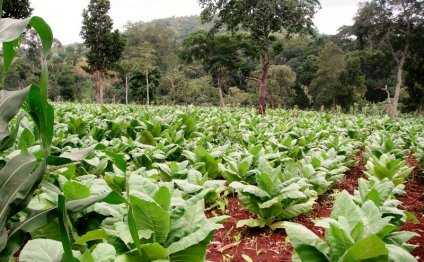
Tobacco, Cash Crop
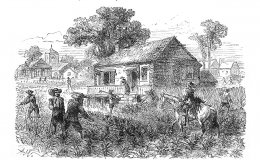 The year was 1614, and the sailing ship Elizabeth was setting off from the young English colony of Jamestown, bound for London with a cargo that included four barrels of tobacco, about 4, 000 pounds. Few probably knew thatthose four barrels would change the entire economy of Virginia in less than a decade.
The year was 1614, and the sailing ship Elizabeth was setting off from the young English colony of Jamestown, bound for London with a cargo that included four barrels of tobacco, about 4, 000 pounds. Few probably knew thatthose four barrels would change the entire economy of Virginia in less than a decade.
The barrels were a test batch, grown by an enterprising settler named John Rolfe who wanted to see if Virginia could break the tobacco monopoly then enjoyed by Spanish plantations in the Caribbean and South America.
The reaction to that first modest shipment was huge. By 1617, tobacco exports from Virginia to England totaled 20, 000 pounds. Colonists sent 50, 000 pounds back home in 1620, and production exploded 30-fold to 1.5 million pounds by the end of that decade.
It would be hard to overstate the importance of tobacco’s sudden explosion onto the Virginia scene. Rolfe, also remembered in the history books for marrying Pocahantas, planted his first crop along the James River around 1612, at a time when the Virginia Colony was riding a long streak of failed commercial ventures including timber, silver, gold, iron, pitch, tar, potash, glass, silk and wine.
In tobacco, though, Virginia finally stuck the jackpot. Within a few years of Rolfe’s first crop, shareholders in the Virginia Company were exchanging shares of stock for 100-acre land-grants to get in on the tobacco rush, according to Nancy Egloff, a historian with the Jamestown-Yorktown Foundation. Immigration to the colony surged. (Not population growth, though, as disease and warfare with the Indians killed new arrivals almost as fast as they came during the first two decades of the tobacco era.)
‘There was this temptation to only grow what’s going to make money. Everybody wanted to plant tobacco.’
Since its founding, the Virginia Colony had excited the hopes of those who saw it as a potential land of plenty. Lord De La Warr, one of the first colonial governors, wrote in 1611 of Virginia’s “wonderfull fertile and very rich” land. “The Cattell already there, ” he continued, “are much increased, and thrive exceedingly with the pasture of that Countrey….”
A few years earlier, John Smith described in some detail how the Indians around Jamestown cleared the forest to plant corn and beans, as well as “Pumpeons and a fruit like unto a muske millen, but lesse and worse; which they call Macocks.” In a later history he published of Virginia, Smith includes a 1619 account from Rolfe claiming than an “industrious man” in Virginia could tend four acres of corn – enough to feed five people – and 1, 000 tobacco plants. “They say also English Wheat will yeeld but sixteene bushels an aker, and we have reaped thirty, ” Rolfe boasted.
In Jamestown’s earliest days, though, the colonists made little attempt to grow their own food, says Egloff. Instead they relied on re-supply from England and trade with the Indians. It was a tenuous arrangement, given the unreliability of the ocean crossing and the exchanges of violence, rather than goods, that the settlers and the Indians often engaged in. During the winter of 1609-10, almost two-thirds of Jamestown’s population died during “The Starving Time, ” when the colonists were reduced to eating mice, snakes, acorns, hides and, in at least, each other. Of the nearly 300 that began the winter in the colony, just 90 survived.
Afterwards, as the tobacco craze took hold, the colonial authorities began passing laws that required farmers to also grow some food. In 1614, the governor began allowing individual settlers to cultivate three acres of tobacco, but mandated an annual contribution of two and a half barrels of corn each year to the common storehouse in return.
In addition to corn, crops grown at by the settlers in Jamestown included wheat, peas, barley, turnips, cabbage, pumpkins, carrots, parsnips and herbs. There were also cattle, goats, and, in Rolfe’s words, “hoggs … not to be numbered [and] Poultry, great plenty.”
Tobacco, though, was where the money was, and just a few short years after the entire colony nearly starved itself out of existence, the settlers seemed eager to grow it above all else. In 1617, Rolfe returned from a hiatus in England to find Jamestown almost empty, with its “streets and all other spare places planted with tobacco” and “the Colony dispersed all about, planting tobacco.”
In 1619, the colonial government again passed a law requiring every farmer to contribute an amount of corn, based on the size of his household, to the storehouse.
“There was this temptation to only grow what’s going to make money, ” Egloff says. “Everybody wanted to plant tobacco.”
VIDEO REVIEWS
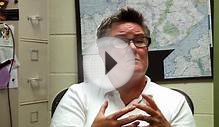
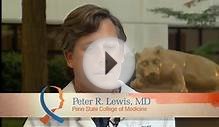
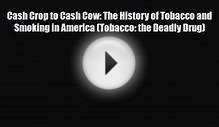
Share this Post
Related posts
Cash crop history
The farming methods employed differ from farmer to farmer and from country to country. In developing countries, many traditional…
Read MoreTobacco history facts
Nicotine was isolated from tobacco leaves ( Nicotiana tabacum ) in 1828, but the powerful effects of nicotine were already…
Read More
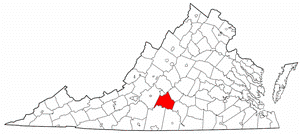 Campbell County is a county located in the Commonwealth of Virginia. The population was 54,842 at the 2010 census. Its county seat is Rustburg. The county is named after General William Campbell of the Revolutionary War.
Campbell County is a county located in the Commonwealth of Virginia. The population was 54,842 at the 2010 census. Its county seat is Rustburg. The county is named after General William Campbell of the Revolutionary War.









